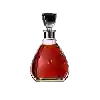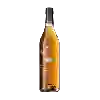
Domaine Manya PuigCuvée Marine Rimage Banyuls Doux Naturel
This wine generally goes well with beef, mature and hard cheese or spicy food.
Food and wine pairings with Cuvée Marine Rimage Banyuls Doux Naturel
Pairings that work perfectly with Cuvée Marine Rimage Banyuls Doux Naturel
Original food and wine pairings with Cuvée Marine Rimage Banyuls Doux Naturel
The Cuvée Marine Rimage Banyuls Doux Naturel of Domaine Manya Puig matches generally quite well with dishes of beef, spicy food or mature and hard cheese such as recipes of roast monkfish with bacon, carry camaron (gambas) from reunion or auvergne fondue with ceps.
Details and technical informations about Domaine Manya Puig's Cuvée Marine Rimage Banyuls Doux Naturel.
Discover the grape variety: Duras
Duras noir is a grape variety that originated in France (Tarn). It produces a variety of grape specially used for wine making. It is rare to find this grape to eat on our tables. This variety of grape is characterized by medium-sized bunches and small grapes. Duras noir can be found in several vineyards: South-West, Cognac, Bordeaux, Armagnac, Provence & Corsica, Rhone Valley, Languedoc & Roussillon.
Informations about the Domaine Manya Puig
The Domaine Manya Puig is one of of the world's greatest estates. It offers 13 wines for sale in the of Banyuls to come and discover on site or to buy online.
The wine region of Banyuls
Banyuls wines come from the South-eastern Part of Roussillon, in the south of France, in the lower Pyrenees, a few kilometres from the Spanish border. These naturally Sweet wines are consumed both as an aperitif and as a dessert. They come in a wide range of hues, from GoldenGreen (Banyuls Blanc) to Amber (Banyuls Ambré) to the intense garnet of the standard Banyuls Rouge. Unusually among the natural sweet wines of France, all Banyuls wines are made primarily from Grenache grapes of various colors.
The wine region of Languedoc-Roussillon
Languedoc (formerly Coteaux du Languedoc) is a key appellation used in the Languedoc-Roussillon wine region of southern France. It covers Dry table wines of all three colors (red, white and rosé) from the entire region, but leaves Sweet and Sparkling wines to other more specialized appellations. About 75% of all Languedoc wines are red, with the remaining 25% split roughly down the middle between whites and rosés. The appellation covers most of the Languedoc region and almost a third of all the vineyards in France.
The word of the wine: Dosing liqueur (champagne)
Also known as liqueur d'expédition, a solution made up of wine and sugar added to champagne after disgorgement and which determines the type of wine: extra-brut, brut, extra-dry, dry, demi-sec.














